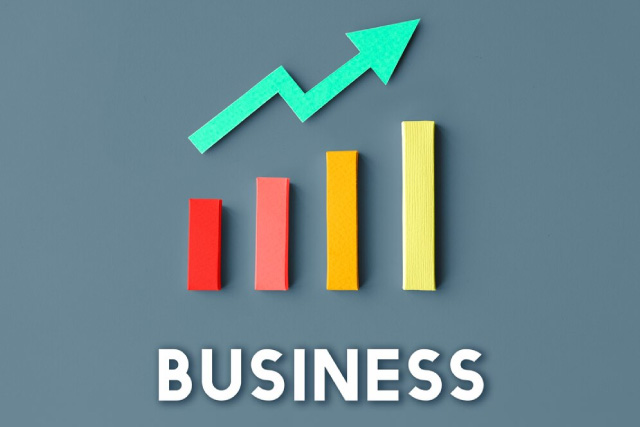If you’re stepping into the business world, especially with small enterprises, you’ve likely encountered the term “SDE.” Seller’s discretionary earnings, or SDE, are pivotal metrics in business valuation. This guide will unravel the mysteries behind SDE, explaining what it is, how buyers and sellers calculate it, and why it is essential.
The following topics will be explored:
- SDE Defined: Seller’s Discretionary Earnings is a vital metric for valuing small businesses, offering a measure of a business’s earnings.
- Calculation Components: SDE encompasses financial elements such as pre-tax net income, owner’s compensation, and discretionary expenses.
- Valuation Methods: Both income-based and market-based valuation methods employ SDE.
- Notable Insight: While SDE is a valuable rule of thumb, it’s not a precise measure of actual cash flow. Increasing SDE can significantly enhance a business’s value.
1. What is SDE in Business?
Seller’s Discretionary Earnings, abbreviated as SDE, is a metric that measures a business’s earnings. When evaluating the value of a small firm, analysts commonly use it as the most common measure of cash flow. SDE becomes a valuable tool for buyers to compare companies for valuation quickly.
2. How is SDE Calculated?

The Seller’s Discretionary Earnings calculation involves several steps to arrive at a comprehensive measure of a business’s earnings. Here’s a breakdown of the calculation process:
2.1. Steps To Calculate SDE:
- Start with Pre-tax Net Income: The bottom-line profit from the Profit and Loss (P&L) statements.
- Join Owner’s Wages: Include all compensation paid to owners.
- 3. Include Interest Expenditure: Include all interest expenses incurred by the business.
- Include Depreciation and Amortization Charges: Non-cash expenses that need to be added back.
- Add Discretionary Expenses: Expenses not essential to the business but paid for by it.
- Adjust for Extraordinary Items: Account for one-time or extraordinary expenses or revenues.
2.2. Mathematical Formula:
SDE = Pre-Tax Net Income + Owner’s Compensation + Interest Expense + Depreciation + Amortization + Discretionary Expenses + Adjustments for Extraordinary ItemsSDE = Pre-Tax Net Income + Owner’s Compensation + Interest Expense + Depreciation + Amortization + Discretionary Expenses + Adjustments for Extraordinary Items
3. Why Use SDE?

SDE serves as an initial earnings measure when a buyer evaluates a company as an acquisition target. It is widely accepted and used in both income-based and market-based valuation methods. The benefits of using SDE include:
- Simplifies Valuation: It provides a straightforward way to assess the value of a small business.
- Facilitates Comparisons: Allows for easy business comparisons, aiding quick evaluations.
- Eliminates Non-Operating Variables: Add discretionary and non-operating expenses for a clearer earnings picture.
- Comprehensive View: Considers various financial elements, providing a reliable measure of a business’s earnings.
- Widely Accepted: Recognized by business brokers, valuation experts, and financial analysts.
- Easy to Calculate: The calculation is relatively simple, making it accessible for small business owners.
- Valid for Different Valuation Methods: Versatile and applicable to various valuation scenarios.
4. Downsides of SDE:

While SDE offers advantages, it’s essential to be aware of its limitations:
- Not an Accurate Measure of Actual Cash Flow: SDE provides an approximate measure but doesn’t account for certain expenses.
- Ignores Working Capital Needs: Consider working capital requirements crucial in SDE.
- Rule of Thumb: Considered a rule of thumb rather than a precise valuation metric.
- Doesn’t Account for Income Taxes: Calculated before income taxes can be a significant expense.
- Limited to Small Businesses: More suitable for small businesses; larger enterprises might require different metrics.
- Subject to Manipulation: Potential for manipulation due to discretionary expenses and adjustments.
- May Not Reflect Market Conditions: Historical measures may not reflect current market conditions.
5. How Do You Increase The Value Of Your Business?

Increasing the value of your business involves strategic planning and operational improvements. Here are key strategies:
- Focus on Profitability: Boost profit margins for increased business value.
- Diversify Revenue Streams: Make the business more resilient by diversifying income sources.
- Improve Operational Efficiency: Streamline operations to cut costs and increase efficiency.
- Build a Strong Customer Base: A loyal customer base enhances business value.
- Enhance Brand Recognition: Invest in performance marketing and branding for a more substantial business identity.
- Develop a Skilled Team: A well-trained team contributes to business value.
- Create Standard Operating Procedures (SOPs): Documented procedures ease transitions and increase business value.
- Secure Long-term Contracts: Stable contracts with clients or suppliers attract buyers.
- Maintain Accurate Financial Records: Transparent financial records increase buyer confidence.
- Plan for Succession: A clear succession plan assures buyers of smooth operations.
- Optimize for SDE: Increasing Seller’s Discretionary Earnings enhances overall business value.
By implementing these strategies, businesses can significantly raise their value, making them more attractive to potential buyers or investors.
6. Delving Deeper Into SDE In Business:

6.1. Alternative Metrics to SDE:
While SDE is popular, other metrics include Last Twelve Months (LTM) SDE, Trailing Twelve Months (TTM) SDE, EBITDA, and EBIT, offering different perspectives.
6.2. Valuation Based on SDE:
- Which Year’s SDE Should Be Used? Usually based on the last full year or trailing twelve months (TTM), with a weighted average in some cases.
- Projected SDE: If growth is consistent, we may place some value on the projected current-year SDE.
- SDE vs. Cash Flow: SDE is not the same as cash flow; it provides an approximate measure of free cash flow.
6.3. Factors Affecting SDE:
Buyers consider customer concentration, growth rates, brand awareness, and working capital requirements.
6.4. EBITDA Vs. SDE For Determining Business Value:
EBITDA and SDE serve different purposes, with EBITDA being more common for larger businesses.
7. What Are SDE Levels?

In the technology industry, an SDE can also be a Software Development Engineer, with levels denoted as SDE-1, SDE-2, and SDE-3. Each level signifies different roles and responsibilities, contributing to career progression.
SDE-1: The Entry Level
- Roles and Responsibilities: Fresh graduates focusing on implementation activities.
- Expectations: Problem-solving is critical, with reliance on senior guidance.
SDE-2: The Senior Level
- Roles and Responsibilities: Individual contributors providing rational, tested solutions to software issues.
- Expectations: Broad knowledge of product code and related components.
SDE-3: Nearing Leadership
- Roles and Responsibilities: Closer to leadership positions, making significant decisions aligned with objectives.
- Expectations: Broad understanding of implementing
Conclusion
In conclusion, Seller’s Discretionary Earnings (SDE) is a crucial metric in the business world, especially for small enterprises. It serves as a valuable tool for both buyers and sellers in the process of business valuation. While SDE simplifies the assessment of a business’s value and facilitates quick comparisons, it’s essential to recognize its limitations. The rule of thumb nature of SDE, its exclusion of certain financial elements, and its susceptibility to manipulation highlight the need for a comprehensive approach to business valuation.
Increasing the value of a business involves strategic planning, operational enhancements, and a focus on various aspects such as profitability, customer base, and brand recognition. Recognizing alternative metrics and understanding factors affecting SDE provides a more nuanced perspective for both buyers and sellers. As businesses navigate the complexities of valuation, considering the broader context and utilizing multiple metrics ensures more informed decision-making.
In the dynamic landscape of business, continuous learning and adaptation are key. Whether you’re an aspiring entrepreneur, a business owner, or an investor, understanding the intricacies of SDE and its broader implications contributes to making sound business decisions.
FAQs
No, SDE and cash flow are not the same. Cash flow can be determined by your “cash flow statement” or “statement of cash flows.” Many small businesses must prepare a cash flow statement, which can lead to confusion.
While SDE is a commonly used metric, it should not be the only one. Buyers will consider dozens of factors, including customer concentration, growth rates, and brand awareness.
SDE is calculated before taxes. It starts with the business’s pre-tax net income and then adds various expenses. This approach allows buyers to estimate these expenses and then deduct the amount from cash flow based on when the money is expended, not when it is removed for tax purposes.
While SDE provides a helpful rule of thumb, there are more accurate measures of cash flow post-acquisition. It doesn’t account for factors like capital expenditures, changes in working capital, or debt repayments that a new owner may face.
While there’s potential manipulation, as SDE includes discretionary expenses and adjustments for extraordinary items, sellers might inflate SDE by categorizing more expenses as “discretionary” or excluding one-time costs.
SDE is most commonly used for small businesses. Other metrics like EBITDA (Earnings Before Interest, Taxes, Depreciation, and Amortization) are often more appropriate for larger enterprises.
Improving the value of your business involves strategies like focusing on profitability, diversifying revenue streams, enhancing operational efficiency, building a solid customer base, and maintaining accurate financial records. Optimizing for SDE is also a critical factor in increasing overall business value.